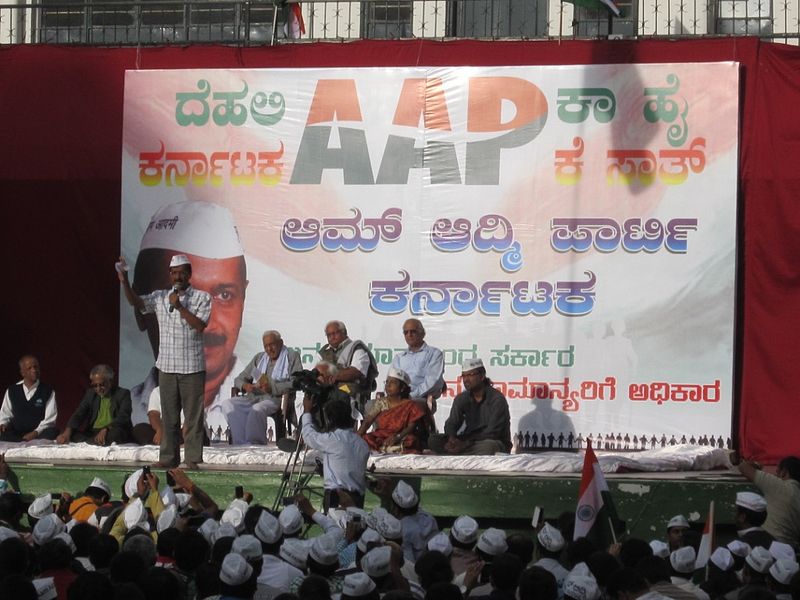“A man may die, nations may rise and fall, but an idea lives on. Ideas have endurance without death.”
–John F. Kennedy
The sweeping victories for India’s pro-business opposition party, the Bharatiya Janata Party (BJP), in recent state elections were largely expected. But more stunning, to say the least, were unexpectedly strong gains in Delhi by a nascent, novice and underfunded political party known as the Aam Aadmi Party, or Common Man’s Party. The party ran a grassroots campaign, taking a page from U.S. President Barack Obama’s “get out the vote” efforts. With a narrow political agenda of providing clean governance, the party won a near majority in the polls, beating candidates with far more financial backing and organizational strength. One wonders how that happened and what that implies for Indian politics.
The party is relatively inexperienced, but on the other hand, has been able to sustain a clean image, which appeared to be more important to today’s Delhi electorate than a long track record or religious affinity. In fact, this party fielded candidates with religious identities or castes not necessarily aligned with the electorate. Furthermore, the party made no effort to appeal to such affiliations. Perhaps India’s largely young population was less concerned with these issues.
The Aam Aadmi Party’s funding strategy was also unconventional. It raised funds from local citizens, who gave large volumes of small amounts, and Indian nationals living overseas, who gave larger amounts in the hope of seeing some change back home. Typically parties have fundraised primarily from self-interested corporations. But to reinforce its transparency, the Aam Aadmi Party posted donations received and their usage on its website—something most other parties did not do. The party also encouraged a more direct and participatory form of democracy in the devising and execution of their agenda. In contrast, most parties have a more hierarchical and dynastic style. Aam Aadmi’s success suggests that there has been a vast unmet need for good grassroots governance in Indian politics, and the party’s credible promise of this swayed many voters.
Many skeptics think that over time, the Aam Aadmi Party may become just like any other. Nonetheless, the implications for the party’s debut electoral performance are enormous for Indian democracy. First of all, the party has demonstrated a viable way of winning an election using transparent means without resorting to short cuts. No matter how this party evolves over time, this disruptive idea will hopefully prevail and continue to bring fresh doses of clean politics into the system. Secondly, the party has brought to forefront the issues truly important to constituents, something other political parties are still struggling with. Additionally, in my opinion, the fear that unless they improve, they will perish, will alone bring a huge change in the mindset of politicians. Hopefully, the Aam Aadmi Party’s success in this election will change the ways in which all Indian politicians conduct their business.
Notwithstanding the success of this kind of politics, one has to bear in mind that Delhi is largely urban and this party’s movement had strong backing of middle class voters that are dominant in this region. Whether this will be replicable to largely rural and poor Indian constituents outside Delhi is something worth watching.
Sunil Asnani, Portfolio Manager at Matthews Asia
The views and information discussed represent opinion and an assessment of market conditions at a specific point in time that are subject to change. It should not be relied upon as a recommendation to buy and sell particular securities or markets in general. The subject matter contained herein has been derived from several sources believed to be reliable and accurate at the time of compilation. Matthews International Capital Management, LLC does not accept any liability for losses either direct or consequential caused by the use of this information. Investing in international and emerging markets may involve additional risks, such as social and political instability, market illiquidity, exchange-rate fluctuations, a high level of volatility and limited regulation. In addition, single-country funds may be subject to a higher degree of market risk than diversified funds because of concentration in a specific geographic location. Investing in small- and mid-size companies is more risky than investing in large companies, as they may be more volatile and less liquid than large companies. This document has not been reviewed or approved by any regulatory body.

